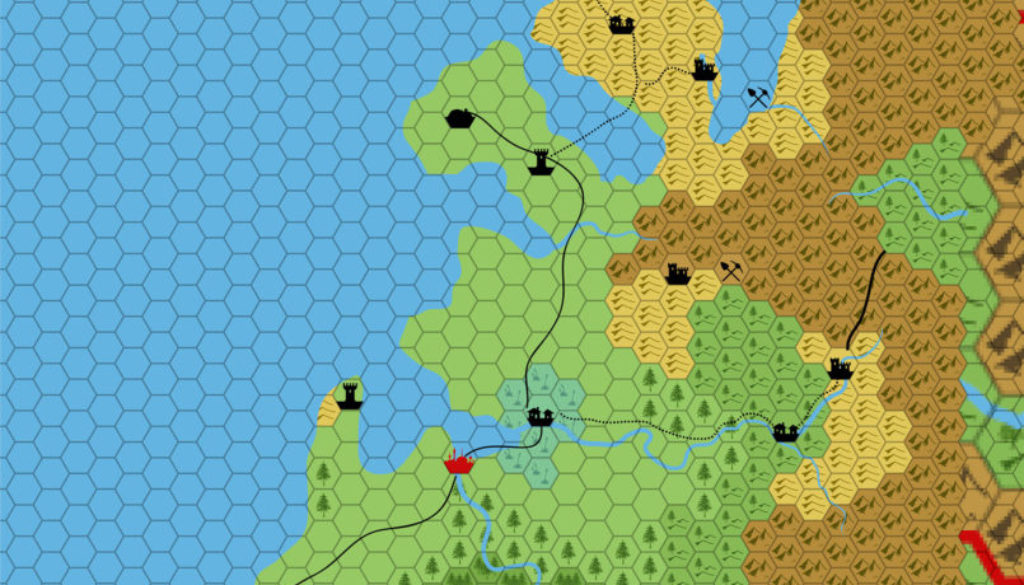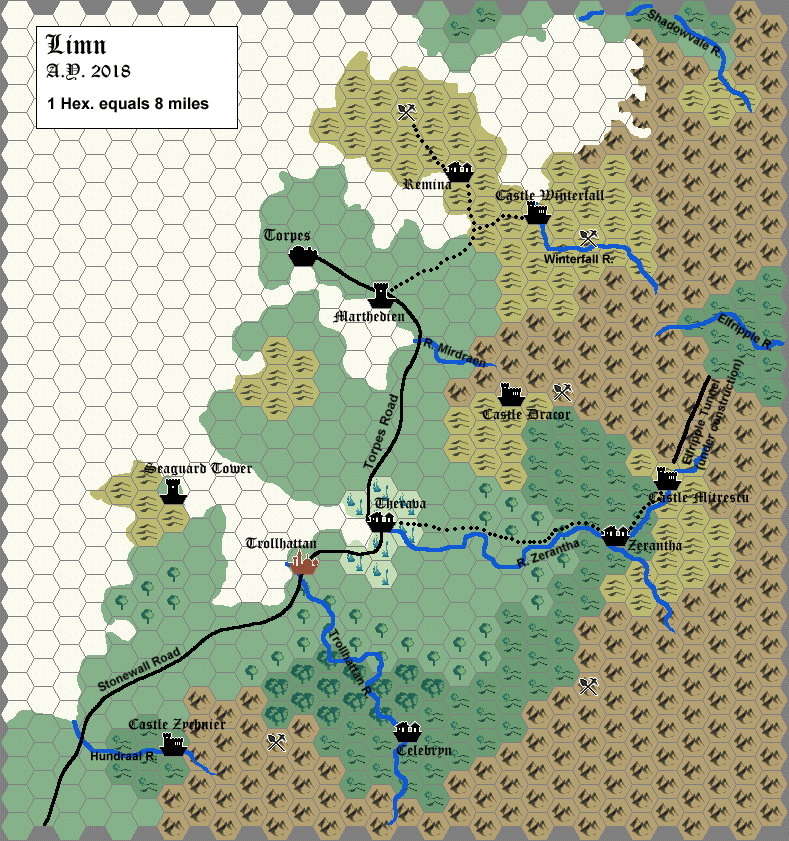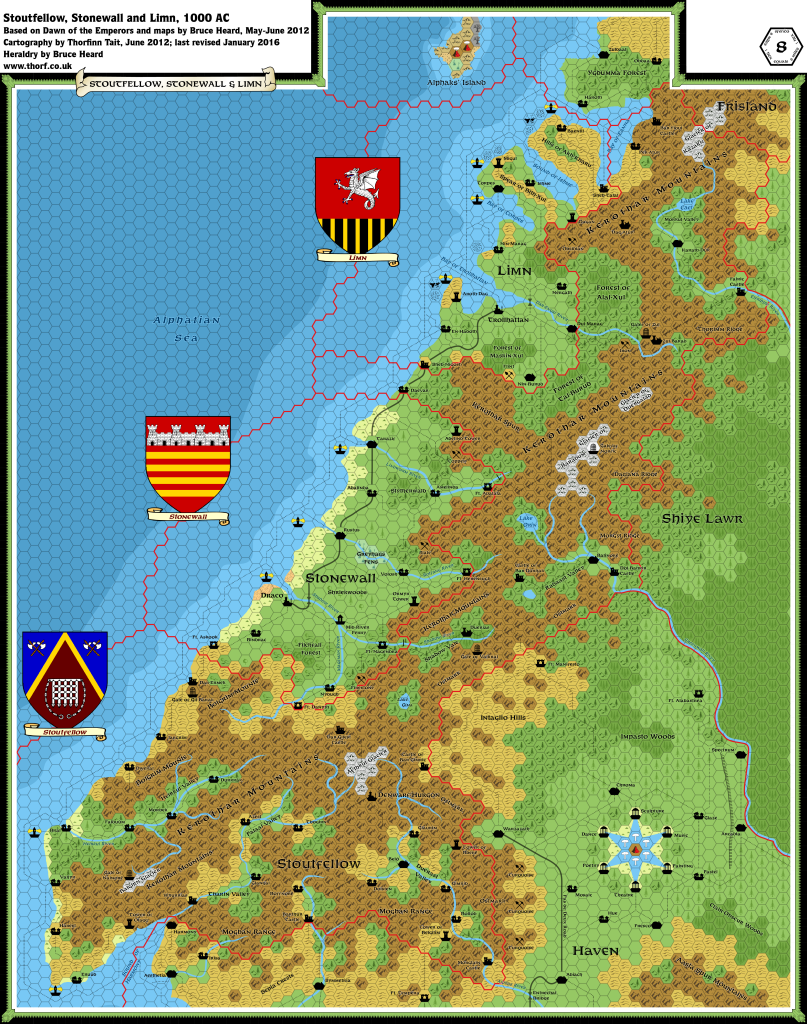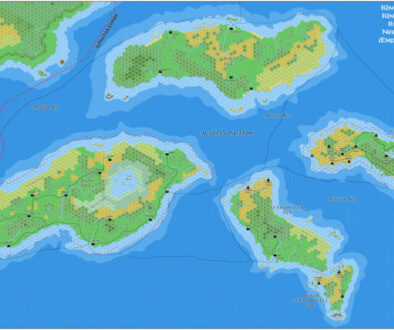Cthulhudrew’s Limn, 8 miles per hex
Andrew sent me his work-in-progress map of Limn in May 2012. Bruce Heard had just kicked off his series of blog posts detailing Alphatia, and I had just started remaking his maps.
I believe Andrew made his map somewhat earlier, but I have been unable to track down our conversation leading up to him sending me the files.
In any case, this map is an attempt to normalise Sverre Midthjell’s 2001 Limn map with the Dawn of the Emperors Alphatia map. Sverre’s map was an amazing early map of Alphatia — likely the first at this scale — but he changed the coastlines quite a bit. Andrew’s map was meant to merge the two maps, making them more compatible.
There has been talk since of merging Sverre’s vision of Limn into Bruce’s, but I don’t think anyone has done this yet.
Fan-made Map by Andrew Theisen (May 2012)
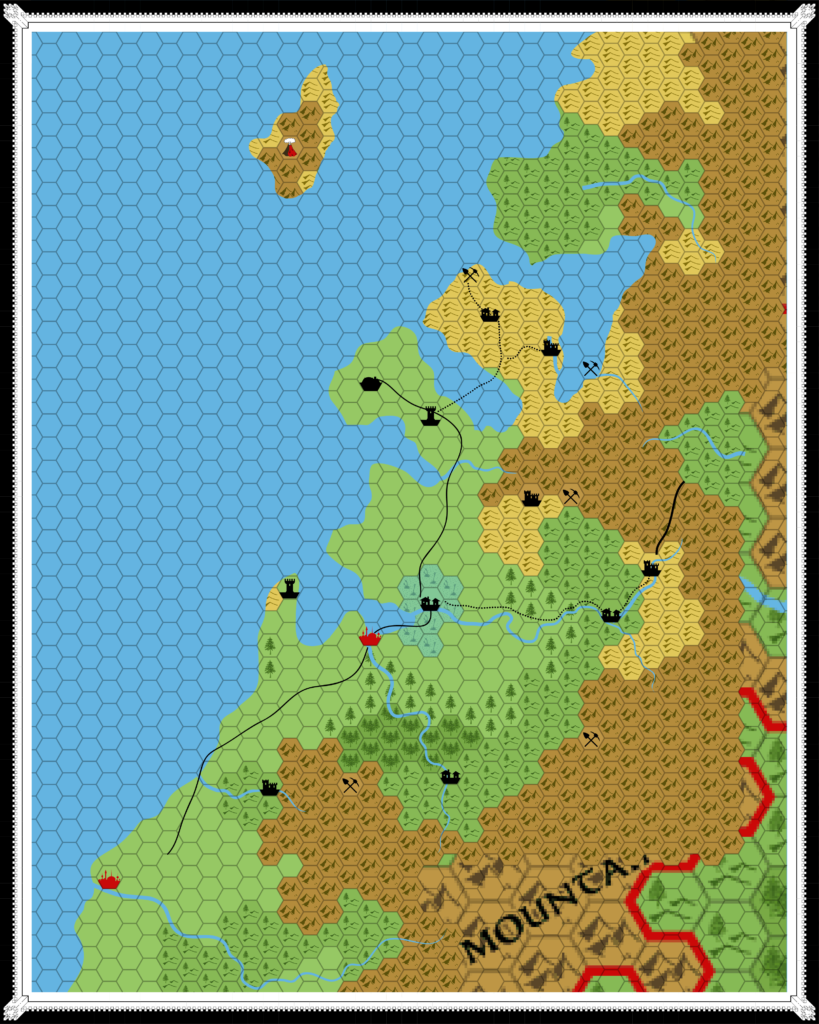
This is an original map created by one of Mystara’s excellent fan cartographers. For more information on the cartographer, including a gallery of all their maps, see also Appendix M: Mappers of Mystara.
Work in progress map: This map is incomplete. It appears here in the most recent state available, but it may be missing certain elements.
Sources
- Dawn of the Emperors (1989) (PDF at DriveThruRPG)
Secondary Sources
- Mystaran Almanac AC 1018 (2002, 2004) (Vaults of Pandius)
- Limn, 8 miles per hex by Sverre Midthjell
References
- Andrew’s entry in Appendix M: Mappers of Mystara
- Andrew’s author page at the Vaults of Pandius
Chronological Analysis
This is a fan-made map. It was published in May 2012. The updated Atlas version of this map is not yet available. See also Appendix C for annual chronological snapshots of the area. For the full context of this map in Mystara’s publication history, see the upcoming Let’s Map Mystara 2012. (Please note that it may be some time before the project reaches this point.)
The following lists are from the Let’s Map Mystara project. Additions are new features, introduced in this map. Revisions are changes to previously-introduced features. Hex Art & Fonts track design elements. Finally, Textual Additions are potential features found in the related text. In most cases, the Atlas adopts these textual additions into updated and chronological maps.
Coming Soon

